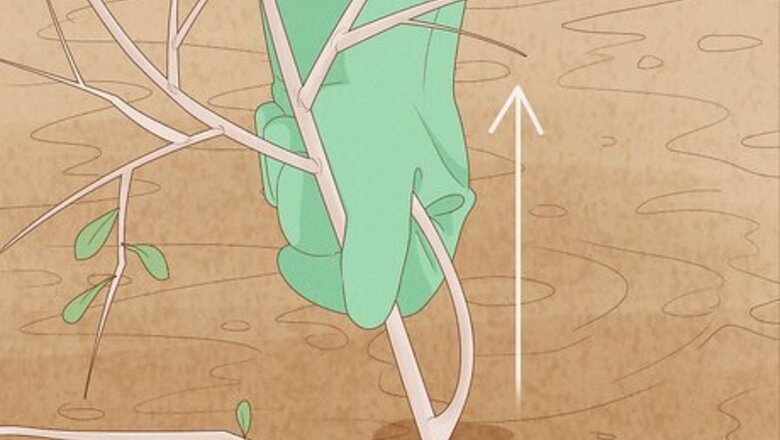
views
Physical Removal
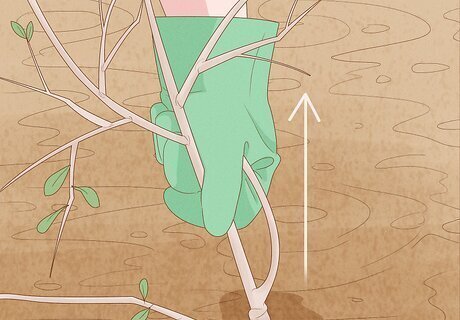
Hand pull small privet. You can remove seedlings and small saplings by hand pulling them, but this is only an option if the privet is taller than 15 inches (40 cm) and thinner than your wrist. Pull the privet as early as possible to prevent it from producing seeds. Spring or early summer is ideal. Also note that the process is usually easiest when the soil is moist. Grab the privet stem at its base. Firmly pull it straight up and without twisting it. Twisting the privet can cause the roots to break, and if any roots remain in the soil, the plant can regrow. If the plant refuses to budge, it might be a sprout from a lateral root instead of a new plant. You'll need to try a different removal option if this is the case.
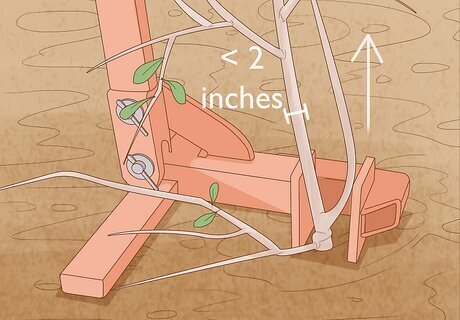
Use a weed wrench. If you're dealing with privet saplings thinner than 2 inches (5 cm) in diameter, you might be able to use a weed wrench to remove it. Weed wrenches are most effective on privet with only a single stem, but you might be able to use one on multi-stemmed privet, as well. Place the mouth of the wrench around the base of the privet, then rock the long handle back and forth until the tool yanks up the plant. Pulling privet in this manner will disturb the soil, so you should avoid using this option in areas with plants you wish to preserve or when privet lies along stream banks and slopes.
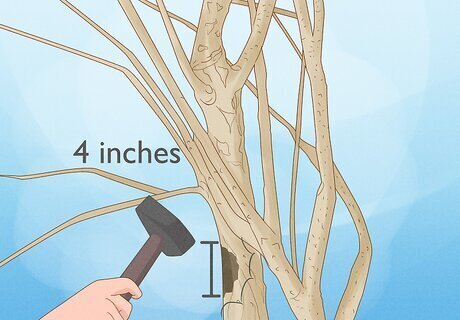
Hammer the bark of larger stems. Once privet becomes wider than the average adult wrist, hammering is the most effective way to remove it without the use of chemicals. In late winter, use a hammer and chisel to remove the bark from a 4 inch (10 cm) section of the trunk. Ideally, this section should lie above ground but beneath the first branch. Throughout the remaining growing period, continue wounding the bark to maintain this blank patch. Within a year or less, the privet should lose its foliage and gradually die off. After the privet dies, you can cut the trunk and dig up the stump.
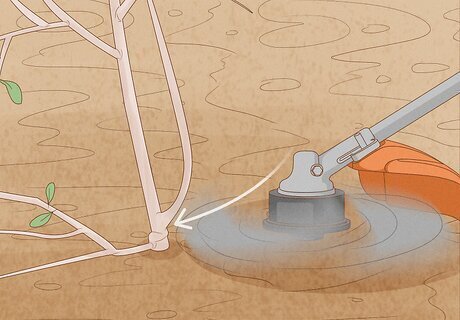
Know the limits of hand cutting. You can cut young privet by hand using standard weed cutters and similar tools, but when used alone, the privet will regrow. If you do cut the privet, trim it as close to the ground as possible early in the growing season. Stumps re-sprout at a rapid pace, so you may need to cut the privet multiple times throughout the season. Alternatively, you can cut the privet and apply an herbicide to the exposed plant. Doing so should kill the privet. See the "Cut and Paint Treatment" section for more detail.
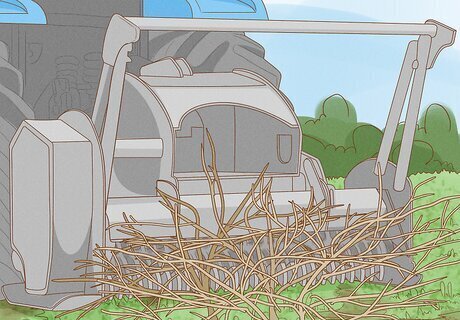
Control privet growth by brush mulching. Brush mulching won't be enough to permanently remove the privet, but it should help keep it under control. This option can work especially well when dealing with dense patches of privet. Use brush mulching in the spring, summer, or winter. Avoid brush mulching in the fall since the privet may spread seed during that season. Drive the brush mulcher over the privet patch, mowing down each individual privet plant as you work. Any remaining stumps should be hidden beneath the resulting mulch, and when the privet regrows, it should do so evenly, making it easier to remove with other methods.
Foliar Herbicide
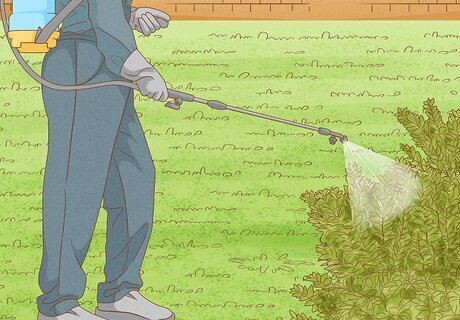
Apply foliar treatments late in the growing season. These treatments are most effective in late summer through early winter. Spring applications are usually ineffective, but summer applications may bring about moderate levels of removal. Note that the privet must still retain green leaves for foliar treatment to be truly effective. The air temperature should be about 40 degrees Fahrenheit (4 degrees Celsius) or higher. Avoid spraying foliar treatments on windy days or near water sources.
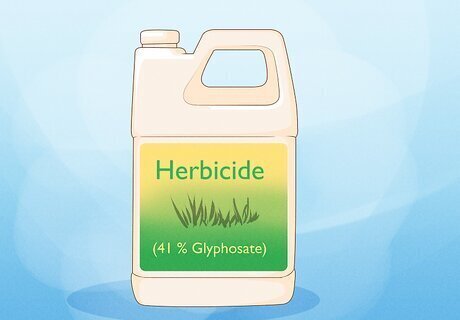
Purchase an appropriate herbicide. Look for foliar herbicides with glyphosate as an active ingredient. More precisely, you should use a concentrated type with 41 percent glyphosate, if not more. "Ready to Use" formulas generally aren't concentrated enough to work. Formulas containing a surfactant may also prove more effective than those without one.
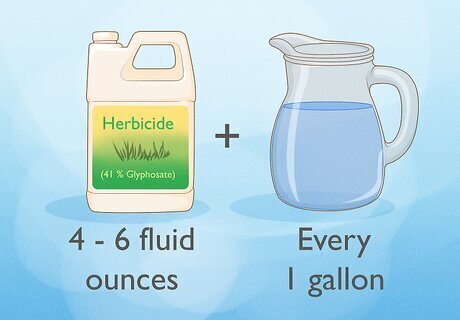
Mix the herbicide with water. Combine 4 to 6 fluid ounces (125 to 185 ml) of herbicide for every 1 gallon (4 L) of water. Follow the label instructions for more precise measurements. If the product must be mixed with an additional surfactant, add 0.6 fluid ounces (18 ml) per 1 gallon (4 L) of water.
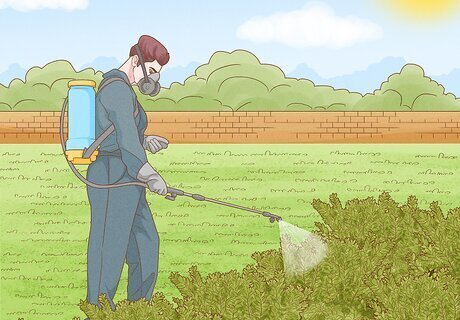
Spray the herbicide onto the privet. Use a sprayer to apply the diluted herbicide directly over the privet patch, covering as much as possible. Single nozzle backpack sprayers are recommended, but you can also use a hose or handgun style sprayer. High-volume handgun sprayers might be most effective when treating high-density patches. Spray until the entire crown foliage is thoroughly wet, but stop before you create any product runoff. Work carefully to avoid spraying other plants since the herbicide will kill non-selectively.
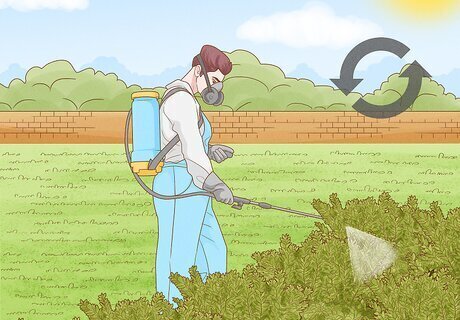
Repeat if needed. For dense privet patches, you may need to repeat another application of herbicide one year after the first treatment. If dense foliage grew back, you will need to apply more foliar herbicide. If only one or two stems grow back, you can consider using an herbicide treatment that targets individual plants.
Basal Bark Herbicide
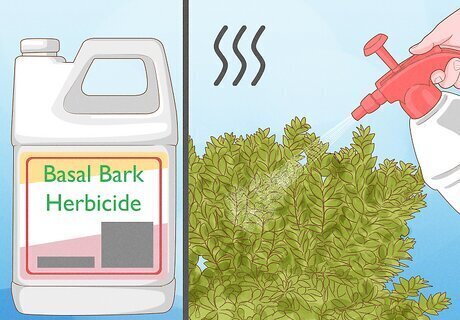
Apply during dry weather. You can apply basal bark herbicides year-round, but the bark of the privet should be dry before treatment. Additionally, the ground should not be frozen. It might be best to apply the herbicide in the late winter or early spring, before foliage develops and hides the targeted stems. Summer and fall applications are more difficult to perform properly, but can still be effective when done right.
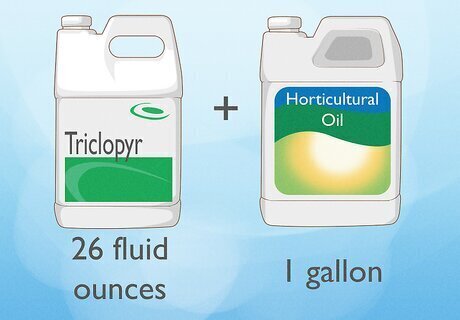
Mix triclopyr with oil. Combine 26 fluid ounces (770 ml) of an oil-soluble triclopyr ester product with enough horticultural oil to create 1 gallon (4 L) of product. Diesel, bark oil, and kerosene are all acceptable options. Note that ready-to-use triclopyr ester herbicides are usually effective against privet, so you can opt for one of these instead of using an herbicide you need to mix.
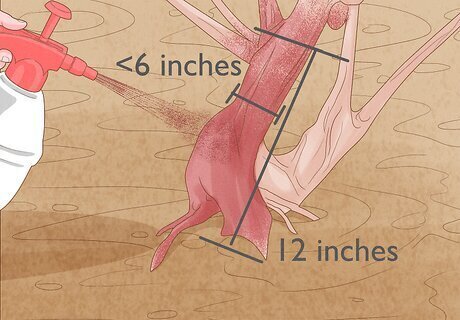
Spray the bottom of the stem. Spray or paint the bottom 12 to 15 inches (30.5 to 38 cm) of each privet stem, thoroughly wetting all sides of the bark. Note that this may only work on privet stems less than 6 inches (15 cm) in diameter. Application is easiest when you use a backpack sprayer with a low pressure spray. Attach an adjustable cone nozzle, flat-fan nozzle, or hollow-cone nozzle to the spray hose. Continue wetting the bark until it appears covered, but do not allow the herbicide to run off and puddle in the soil around the base of the stem.
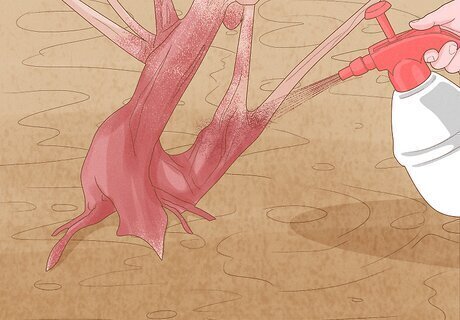
Follow up only as needed. Basal bark treatments will kill the privet after a period of several months, so you need to give it adequate time to work. If some privet still remains after most has died off, however, you can try another application. Ideally, any follow-up application should be made no sooner than the fall or winter if you applied the initial treatment during late winter or early spring. Before reapplying additional herbicide, evaluate your options. Small stems that may have been missed during the initial application can be successfully treated with the basal bark method. Medium stems and large stems may respond more effectively to other treatments, however.
Cut and Paint Treatment
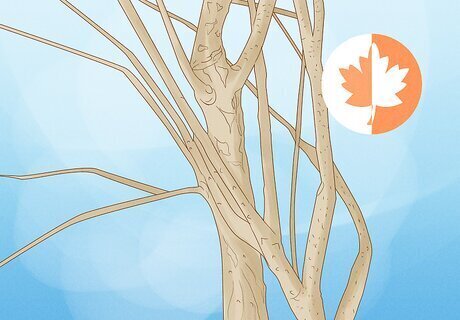
Apply this treatment during the fall. While this treatment can be effective throughout different seasons, it is usually easiest to apply it during the late fall, after most foliage has died off. Do not use the cut-and-paint method during early spring. Privet sap flows upward at that time of year, so the exposed stump will quickly become damp and sticky after you cut it, thereby reducing the effectiveness of the herbicide.
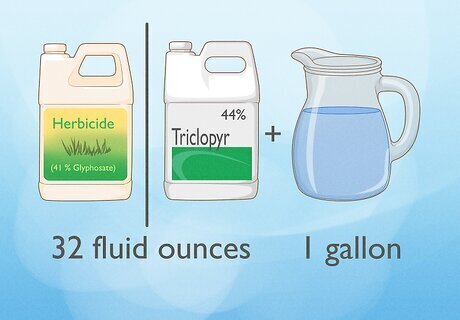
Mix an appropriate herbicide solution. Herbicides made with glyphosate or triclopyr amine are best. Mix either herbicide with water to form an appropriate solution. When using glyphosate, choose a concentrate with 41 percent or higher. When using triclopyr amine, choose a concentrate with 44 percent or higher. For either glyphosate or triclopyr amine, combine 32 fluid ounces (945 ml) with enough water to make 1 gallon (4 L) of prepared solution. If you'll need to postpone chemical treatment after performing the cutting, you should use 26 fluid ounces (770 ml) of a triclopyr ester herbicide mixed with enough diesel or bark oil to create 1 gallon (4 L) of solution.
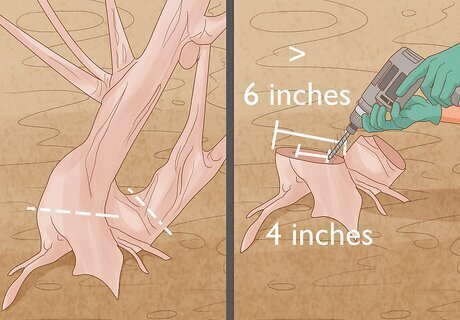
Cut down the privet. Cut down the privet stem, leaving only a short stump. Remove any sawdust from the site before continuing. Any cut you make should lie beneath the lowest branch of the stem. Cuts lying at ground level are best, but the process should still work as long as the stump is low and there are no branches left on the remains. If the privet is larger than 6 inches (15 cm) in diameter, you may need to drill holes into the stump to improve the effectiveness of the herbicide. Use a 10 mm drill bit to create downward holes in the cut surface, spacing them 4 inches (10 cm) apart.
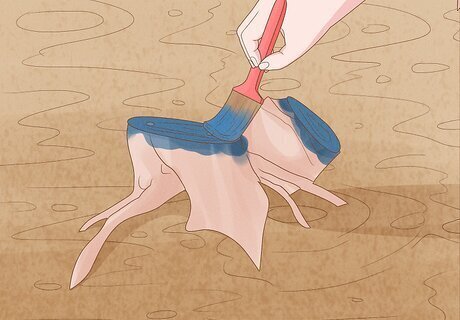
Paint the privet with the herbicide solution. For the best results, you should immediately paint or spray the cut area with your prepared herbicide solution. One of the easiest ways to apply the solution is with a spray bottle. Cover the entire cut area until it becomes moist, but do not allow the herbicide to drip off and form a puddle around the stump. Herbicide application should usually be performed within minutes of the cutting procedure. If you cannot do so, apply an appropriate triclopyr ester solution within two or three weeks of cutting.
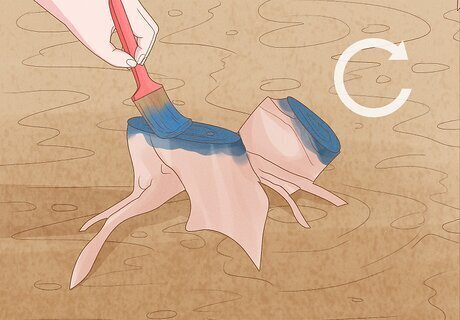
Reapply only if necessary. If done correctly, every treated privet stem should die off, making a second application unnecessary in most cases. If the privet does not die off within one or two months, however, you can attempt to reapply the herbicide solution following the same procedure.
















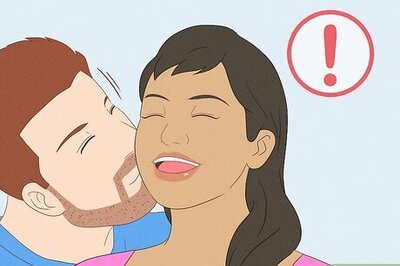



Comments
0 comment